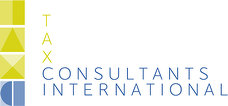Payroll & HR services Global Mobility Services International labor and cross border assignments Tax compliance
Subject to Dutch personal income tax
If an individual qualifies as a resident taxpayer of the Netherlands, this individual is in essence subject to Dutch personal income tax for his/her worldwide income. The most important exception to this rule is the expatriate who officially qualifies as a resident taxpayer of the Netherlands, but who has opted for the partial non-residence status on the basis of the 30%-ruling.
This partial non-residence status implies that the individual will in essence be taxed as a non-resident for income from substantial shareholding (Box 2 income) and income from savings and investments (Box 3 income). For income from labor and main residence (Box 1 income) the individual is always treated as a resident taxpayer of the Netherlands (with the exception of US nationals for whom special rules apply).
Another important exception to the worldwide taxation of resident taxpayers evolves from applicable tax treaties the Netherlands concluded with other countries.
If a Dutch resident taxpayer receives certain categories of income from a country which concluded a tax treaty with the Netherlands, this tax treaty can oblige the Netherlands to provide relief for double taxation (tax exemption or tax credit) on this foreign sourced income.
For determining the taxable basis and the tax due, the income of the taxpayer must be allocated to a certain box. There are three (3) Boxes of income. Every Box has its own rules with regard to the way the income must be computed and every box has different applicable tax rates.
Box 1 relates to income from labor and main residence (including income from employment and income from sole proprietorship) (in Dutch: 'inkomen uit werk en woning'). Box 2 relates to income from substantial shareholding (in Dutch: 'inkomen uit aanmerkelijk belang') and finally Box 3 relates to income from savings and investments (in Dutch: 'inkomen uit sparen en beleggen').


.png)



